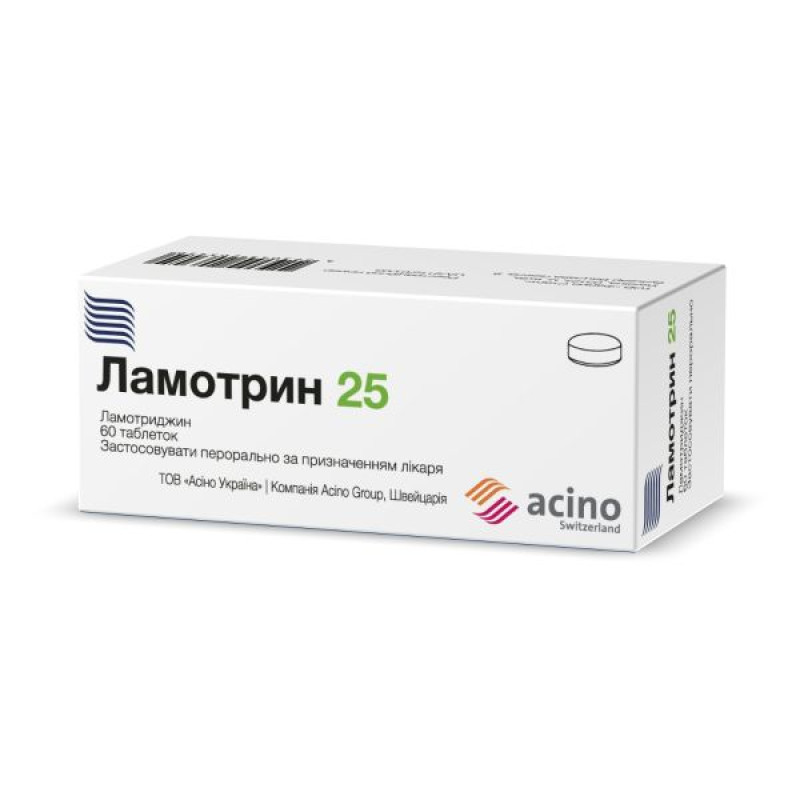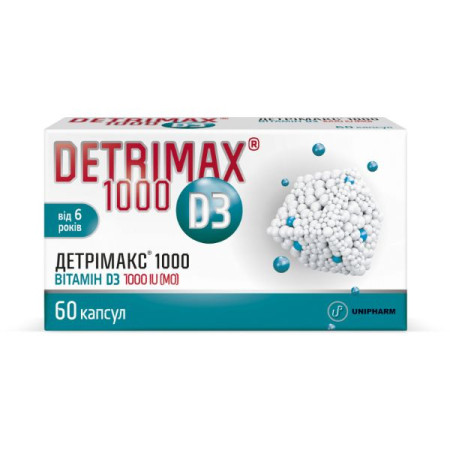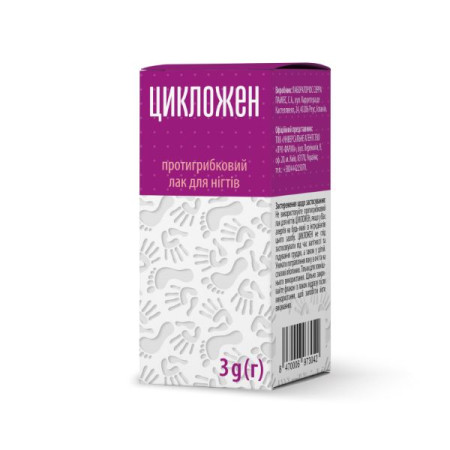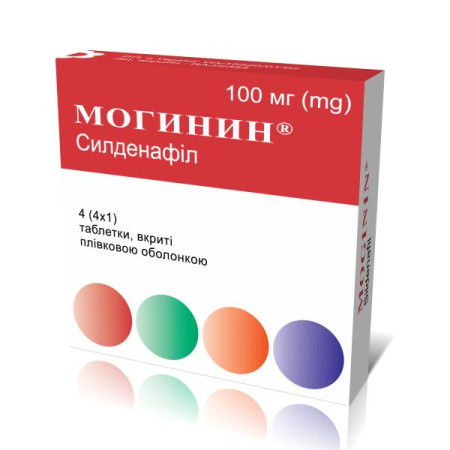Lamotrigine 25 tablets 25 mg blister No. 60

Instructions Lamotrin 25 tablets 25 mg blister No. 60
Composition
active ingredient: lamotrigine;
1 tablet contains lamotrigine 25 mg or 50 mg or 100 mg;
Excipients: microcrystalline cellulose, colloidal anhydrous silica, povidone, sodium starch glycolate (type A), lactose monohydrate, magnesium stearate.
Dosage form
Pills.
main physicochemical properties: tablets, white or almost white in color, with a biconvex surface, round in shape (Lamotrigine 25), with a score on one side (Lamotrigine 50 and Lamotrigine 100).
Pharmacotherapeutic group
Antiepileptic drugs. Lamotrigine. ATX code N03A X09.
Pharmacological properties
Pharmacodynamics.
Mechanism of action
Pharmacological studies have shown that lamotrigine is an action-dependent and voltage-dependent blocker of voltage-gated sodium channels. It inhibits persistent neuronal reactivation and inhibits the release of glutamate (a neurotransmitter that plays a key role in the onset of epileptic seizures). It is likely that this effect is responsible for the anticonvulsant properties of lamotrigine.
However, the mechanisms that provide the therapeutic effect of lamotrigine in bipolar disorder remain unknown, although interaction with voltage-gated sodium channels plays an important role.
Pharmacodynamic effects
Studies of the effects of drugs on the central nervous system found no difference in healthy volunteers between 240 mg of lamotrigine and placebo, while both 1000 mg of phenytoin and 10 mg of diazepam significantly impaired fine visual-motor coordination, eye motility, and body balance, and also caused a subjective sedation effect.
In another study, single oral doses of 600 mg carbamazepine significantly impaired fine motor coordination, eye movements, and balance, and increased heart rate, while lamotrigine 150 mg and 300 mg did not differ from placebo.
Effect of lamotrigine on cardiac conduction
In a study in healthy adult volunteers, the effects of repeated doses of lamotrigine (up to 400 mg/day) on cardiac conduction were assessed using 12-lead ECG. There was no clinically significant effect of lamotrigine on the QT interval compared with placebo.
Clinical efficacy and safety
Prevention of mood episodes in patients with bipolar disorder
The efficacy of lamotrigine for the prevention of mood episodes in patients with bipolar I disorder was evaluated in two studies.
The SCAB2003 study, a multicenter, double-blind, double-dummy, placebo- and lithium-controlled, randomized, fixed-dose study for the long-term prevention of recurrent and recurrent episodes of depression and/or mania, was conducted in patients with bipolar I disorder with an existing or recent major depressive episode. After stabilization with lamotrigine monotherapy or adjunctive therapy, patients were randomly assigned to one of five treatment groups for up to 76 weeks (18 months): lamotrigine (50, 200, 400 mg/day), lithium (serum level 0.8 to 1.1 mmol/L), or placebo. The primary endpoint was “time to intervention due to mood episode (TIME),” where interventions were considered adjunctive pharmacotherapy or electroconvulsive therapy (ECT). SCAB2006 was a similar study design to SCAB2003, but used a more flexible lamotrigine dosing regimen (100 to 400 mg/day) and included patients with bipolar I disorder with a current or recent manic episode. The results are shown in Table 1.
Table 1
Summary of the results of studies on the effectiveness of lamotrigine for the prevention of mood episodes in patients with bipolar I disorder
| Proportion of patients without events at week 76 | ||||||
SCAB2003 study Bipolar disorder type I | SCAB2006 study Bipolar disorder type I | |||||
| Inclusion criterion | Major depressive episode | Major manic episode | ||||
| Lamotrigine | Lithium | Placebo | Lamotrigine | Lithium | Placebo | |
| Without intervention | 0.22 | 0.21 | 0.12 | 0.17 | 0.24 | 0.04 |
| p-value of the log rank test | 0.004 | 0.006 | - | 0.023 | 0.006 | - |
| Without depression | 0.51 | 0.46 | 0.41 | 0.82 | 0.71 | 0.40 |
| p-value of the log rank test | 0.047 | 0.209 | - | 0.015 | 0.167 | - |
| Without mania | 0.70 | 0.86 | 0.67 | 0.53 | 0.64 | 0.37 |
| p-value of the log rank test | 0.339 | 0.026 | - | 0.280 | 0.006 | - |
| Drugs that increase lamotrigine concentrations | Drugs that reduce lamotrigine concentrations | Drugs that have little or no effect on lamotrigine concentrations |
| Valproate | Atazanavir/ritonavir Carbamazepine Ethinyl estradiol/levonorgestrel combination Lopinavir/ritonavir Phenobarbital Phenytoin Primidone Rifampicin | Aripiprazole Bupropion Felbamate Gabapentin Lacosamide Levetiracetam Lithium Olanzapine Oxcarbazepine Paracetamol Perampanel Pregabalin Topiramate Zonisamide |
For detailed information on dosage, see the section “General dosage recommendations for special patient groups” in the “Method of administration and dosage” section. For dosage instructions for women taking hormonal contraceptives, see the section “Hormonal contraceptives” in the “Special warnings and precautions for use” section.
Interaction with antiepileptic drugs (AEDs)
Valproate, which inhibits lamotrigine glucuronidation, slows the metabolism of lamotrigine and increases its mean half-life by approximately 2-fold. Patients receiving concomitant valproate should use an appropriate dosing regimen (see section "Method of administration and dosage").
Some AEDs (such as phenytoin, carbamazepine, phenobarbital and primidone) that induce cytochrome P450 microsomal enzymes induce UTG and accelerate the metabolism of lamotrigine. Patients receiving concomitant phenytoin, carbamazepine, phenobarbital or primidone should use an appropriate dosage regimen (see section "Method of administration and dosage").
Central nervous system adverse reactions, including dizziness, ataxia, diplopia, blurred vision, and nausea, have been reported in patients receiving carbamazepine concomitantly with lamotrigine. These events usually resolve with dose reduction of carbamazepine. Similar effects have been observed in studies of lamotrigine and oxcarbazepine in adult volunteers, but dose reduction has not been studied. It is known that in a study in healthy adult volunteers using a dose of lamotrigine 200 mg and a dose of oxcarbazepine 1200 mg, oxcarbazepine did not alter the metabolism of lamotrigine, and lamotrigine did not alter the metabolism of oxcarbazepine. Patients receiving concomitant oxcarbazepine should use the lamotrigine adjunctive therapy regimen without valproate and without glucuronidation inducers (see section 4.2).
A retrospective analysis of plasma levels in patients taking lamotrigine with or without gabapentin showed that gabapentin did not alter the theoretical clearance of lamotrigine.
It is known that the potential drug interaction between levetiracetam and lamotrigine has been studied by assessing the serum concentrations of both drugs in placebo-controlled clinical trials. According to these data, the substances do not alter the pharmacokinetics of each other.
Steady-state plasma concentrations of lamotrigine are not altered by co-administration of pregabalin (200 mg 3 times daily). There is no pharmacokinetic interaction between lamotrigine and pregabalin.
Topiramate does not affect the plasma concentration of lamotrigine. The use of lamotrigine increases the concentration of topiramate by 15%.
It is known that, according to the study, the use of zonisamide (200-400 mg/day) together with lamotrigine (150-500 mg/day) for 35 days for the treatment of epilepsy had no significant effect on the pharmacokinetics of lamotrigine.
Plasma lamotrigine concentrations were not affected by co-administration with lacosamide (200, 400 or 600 mg/day) in placebo-controlled clinical trials in patients with partial-onset seizures. In three placebo-controlled clinical trials of additional co-administration of perampanel with lamotrigine in patients with partial-onset and primary generalized tonic-clonic seizures, the highest dose of perampanel tested (12 mg/day) increased lamotrigine clearance by less than 10%.
Although there have been reports of changes in plasma concentrations of other antiepileptic drugs, available data suggest that lamotrigine does not affect the plasma concentrations of concomitant antiepileptic drugs. In vitro studies have shown that lamotrigine does not affect the binding of other antiepileptic drugs to serum proteins.
Interaction with other psychotropic substances.
It is known that concomitant administration of 100 mg/day of lamotrigine and 2 g of anhydrous lithium gluconate administered twice daily for 6 days to 20 healthy volunteers did not alter the pharmacokinetics of lithium. In a study in 12 patients, multiple oral doses of bupropion had no statistically significant effect on the pharmacokinetics of a single dose of lamotrigine and resulted in only a small increase in the area under the concentration-time curve of lamotrigine glucuronide. It is known that in a study in adult volunteers, 15 mg of olanzapine decreased the area under the concentration-time curve (AUC) and maximum concentration (Cmax) of lamotrigine by an average of 24% and 20%, respectively. Lamotrigine at a dose of 200 mg did not affect the pharmacokinetics of olanzapine.
Multiple oral doses of lamotrigine 400 mg/day had no clinically significant effect on the pharmacokinetics of risperidone when administered as a single 2 mg dose. When risperidone 2 mg was coadministered with lamotrigine, 12 of 14 volunteers reported somnolence compared to 1 of 20 volunteers receiving risperidone alone. No cases of somnolence were reported with lamotrigine alone.
It is known that in a clinical study involving 18 adult patients with bipolar disorder who received lamotrigine (100-400 mg/day) and aripiprazole with a gradual dose increase from 10 mg/kg to 30 mg/kg over 7 days, and then for another 7 days, an approximately 10% decrease in Cmax and AUC of lamotrigine was observed.
In vitro experiments have shown that the presence of amitriptyline, bupropion, clonazepam, haloperidol or lorazepam may minimally inhibit the formation of the primary metabolite of lamotrigine, 2-N-glucuronide. These experiments also showed that the metabolism of lamotrigine is not inhibited by clozapine, fluoxetine, phenelzine, risperidone, sertraline or trazodone. Studies of the metabolism of bufuralol in human liver microsomes suggest that lamotrigine does not reduce the clearance of drugs that are primarily metabolized by CYP 2D6.
Interaction with hormonal contraceptives.
Effect of hormonal contraceptives on the pharmacokinetics of lamotrigine.
There is evidence that the combination of "ethinylestradiol 30 mcg/levonorgestrel 150 mcg" increases the excretion of lamotrigine by approximately 2-fold, which in turn causes a decrease in the area under the curve AUC and Cmax of lamotrigine, on average by 52% and 39%, respectively. With a one-week break in contraceptive use (the so-called contraceptive-free week), the concentration of lamotrigine in the blood serum gradually increased, reaching a concentration that was approximately 2-fold higher than with simultaneous use of the drugs (see section "Special features of use"). With simultaneous use of hormonal contraceptives, correction of lamotrigine doses during the titration phase is not required. However, the maintenance dose of lamotrigine should be increased or decreased each time the patient starts or stops taking hormonal contraceptives (see section "Method of administration and dosage").
In a study of 16 female volunteers, lamotrigine at steady-state concentrations at 300 mg did not affect the pharmacokinetics of ethinyl estradiol, a component of a combined oral contraceptive pill. There was a persistent, small increase in the clearance of levonorgestrel, which resulted in a mean decrease in AUC and Cmax of levonorgestrel of 19% and 12%, respectively. Serum measurements of follicle-stimulating hormone, luteinizing hormone, and estradiol during the study showed suppression of ovarian hormonal activity in some women, although serum progesterone measurements revealed no hormonal signs of ovulation in any of the women. The effect of changes in serum follicle-stimulating hormone and luteinizing hormone levels and the slight increase in levonorgestrel excretion on ovarian ovulatory activity is unknown (see section “General dosage recommendations for special patient groups” in the “Dosage and administration” section for dosage in women taking hormonal contraceptives and section “Hormonal contraceptives” in the “Special warnings and precautions for use” section). It is known that the effect of lamotrigine at daily doses above 300 mg has not been studied. It has been reported that studies of other hormonal contraceptives have also not been conducted.
Interaction with other drugs.
It is known that in a study involving 10 male volunteers, rifampicin accelerated the clearance and shortened the half-life of lamotrigine due to induction of hepatic enzymes responsible for glucuronidation.
For patients receiving concomitant rifampicin therapy, the treatment regimen recommended for lamotrigine and related glucuronidation inducers should be used (see section 4.2).
In studies in healthy volunteers, lopinavir/ritonavir approximately halved the plasma concentration of lamotrigine by inducing glucuronidation.
For patients receiving concomitant lopinavir/ritonavir therapy, the treatment regimen recommended for concomitant use of lamotrigine with appropriate glucuronidation inducers should be used (see section 4.2).
Co-administration of atazanavir/ritonavir (300 mg/100 mg) reduced the plasma AUC and Cmax of lamotrigine (100 mg) by an average of 32% and 6%, respectively. Patients already taking lopinavir/ritonavir should follow the appropriate lamotrigine dosing regimen (see section 4.2).
According to studies in healthy volunteers, the use of paracetamol at a dosage of 1 g (four times a day) reduced the AUC and Cmin of lamotrigine in blood plasma by an average of 20% and 25%, respectively.
In vitro studies of lamotrigine on organic cation transporter 2 (OCT 2) have shown that lamotrigine, but not the N(2)-glucuronide metabolite, is an inhibitor of OCT 2 at potentially clinically relevant concentrations. These data indicate that lamotrigine is an inhibitor of OCT 2 with an IC50 of 53.8 µM. Concomitant use of lamotrigine with medicinal products that are substrates of OCT 2 and are excreted by the kidneys (e.g. metformin, gabapentin, varenicline) may result in increased plasma concentrations of these medicinal products. The clinical significance of this effect remains unclear, but lamotrigine should be used with caution in patients taking such medicinal products.
Application features
Special precautions
Skin rashes
A skin rash may occur within the first 8 weeks of treatment with lamotrigine. In most cases, the rash is mild and resolves without treatment, but severe skin reactions requiring hospitalisation and discontinuation of the drug have been reported. These include potentially life-threatening rashes, including Stevens-Johnson syndrome and toxic epidermal necrolysis, and drug reaction with eosinophilia and systemic symptoms (DRESS); also known as hypersensitivity syndrome (HSS) (see section 4.8).
In adults who participated in studies using current dosing recommendations for lamotrigine, the incidence of severe skin rashes was approximately 1 in 500 patients with epilepsy. Approximately half of these cases were Stevens-Johnson syndrome (1 in 1,000). In patients with bipolar disorder, the incidence of severe skin rashes was 1 in 1,000.
Children are at higher risk of developing serious skin rashes than adults. Studies with lamotrigine have shown that the incidence of rashes leading to hospitalisation in children varies from 1 in 300 to 1 in 100 patients.
In children, the first signs of skin rashes may be mistaken for infection, so doctors should be aware of the possibility of an adverse reaction to the drug in children who develop rashes and fever during the first 8 weeks of therapy.
Lamotrigine should be prescribed with caution to patients with a history of allergy or rash to other antiepileptic drugs, as the incidence of moderate rash after treatment with lamotrigine in this group of patients was 3 times higher than in the group without such a history.
The HLA-B*1502 allele in individuals of Asian (predominantly Chinese and Thai) descent is associated with an increased risk of Stevens-Johnson syndrome/toxic epidermal necrolysis with lamotrigine. If a patient tests positive for the HLA-B*1502 allele, the decision to use lamotrigine should be carefully considered.
All patients (adults and children) who develop a rash should be evaluated promptly by a physician and lamotrigine should be discontinued immediately, unless the rash is not related to lamotrigine. Lamotrigine should not be restarted if the previous dose was discontinued due to a skin reaction. In such cases, the decision to restart the drug should be based on the expected benefit of treatment and the potential risk.
Patients who have developed Stevens-Johnson syndrome, toxic epidermal necrolysis, and drug reaction with eosinophilia and systemic symptoms (DRESS) after taking lamotrigine should not be re-administered with lamotrigine.
Skin rashes have been reported as a manifestation of DRESS syndrome, also known as hypersensitivity syndrome. This condition is accompanied by various systemic symptoms, including fever, lymphadenopathy, facial swelling, abnormal blood counts, liver and kidney function, and aseptic meningitis (see section 4.8). The syndrome can vary in severity and can rarely lead to disseminated intravascular coagulation and multiorgan failure. Early signs of hypersensitivity (e.g. fever and lymphadenopathy) may occur even in the absence of skin rashes. If such symptoms occur, the patient should be evaluated promptly and, unless otherwise indicated, lamotrigine should be discontinued.
In most cases, aseptic meningitis resolves after discontinuation of the drug, but in some cases it may recur when lamotrigine is re-administered. Re-administration of lamotrigine causes a rapid return of symptoms, often of a more severe nature. Lamotrigine should not be re-administered to patients who have been discontinued due to aseptic meningitis during previous administration.
Photosensitivity reactions have also been reported with lamotrigine (see section 4.8). In a few cases, the reaction occurred with high doses (400 mg or more), after dose increases or rapid titration. If a patient with signs of photosensitivity (e.g. severe sunburn) is suspected of having photosensitivity related to lamotrigine, discontinuation of treatment should be considered. If continued treatment with lamotrigine is considered clinically warranted, the patient should be advised to avoid exposure to sunlight and artificial ultraviolet light and to take protective measures (e.g. use of protective clothing and sunscreen).
Hemophagocytic lymphohistiocytosis (HLH)
GLH has been reported in patients taking lamotrigine (see section 4.8). GLH is characterised by signs and symptoms such as fever, rash, neurological symptoms, hepatosplenomegaly, lymphadenopathy, cytopenias, increased serum ferritin, hypertriglyceridaemia and abnormal liver and coagulation functions. Symptoms usually occur within 4 weeks of initiation of treatment.
Patients should be informed about the symptoms associated with GLH and advised to seek immediate medical attention if these symptoms occur during treatment with lamotrigine.
Patients should be examined immediately if they:
There are no reviews for this product.
There are no reviews for this product, be the first to leave your review.
No questions about this product, be the first and ask your question.








